SALMAGUNDI
Magazine
Part of the Birss 2023 Exhibit:
A Celebration of the Works of Nadine Gordimer
VISIT THE REST OF THE EXHIBIT
Nadine Gordimer
Apartheid
John Howard Birss, Jr. Memorial Program
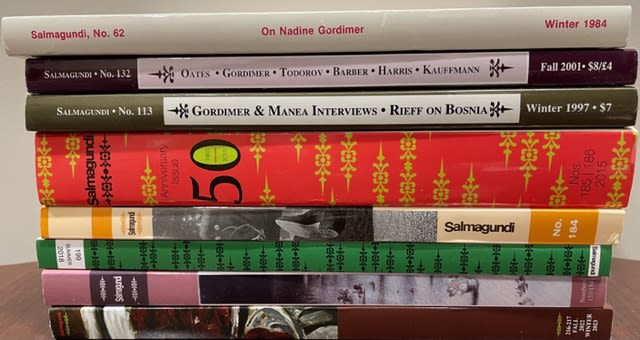
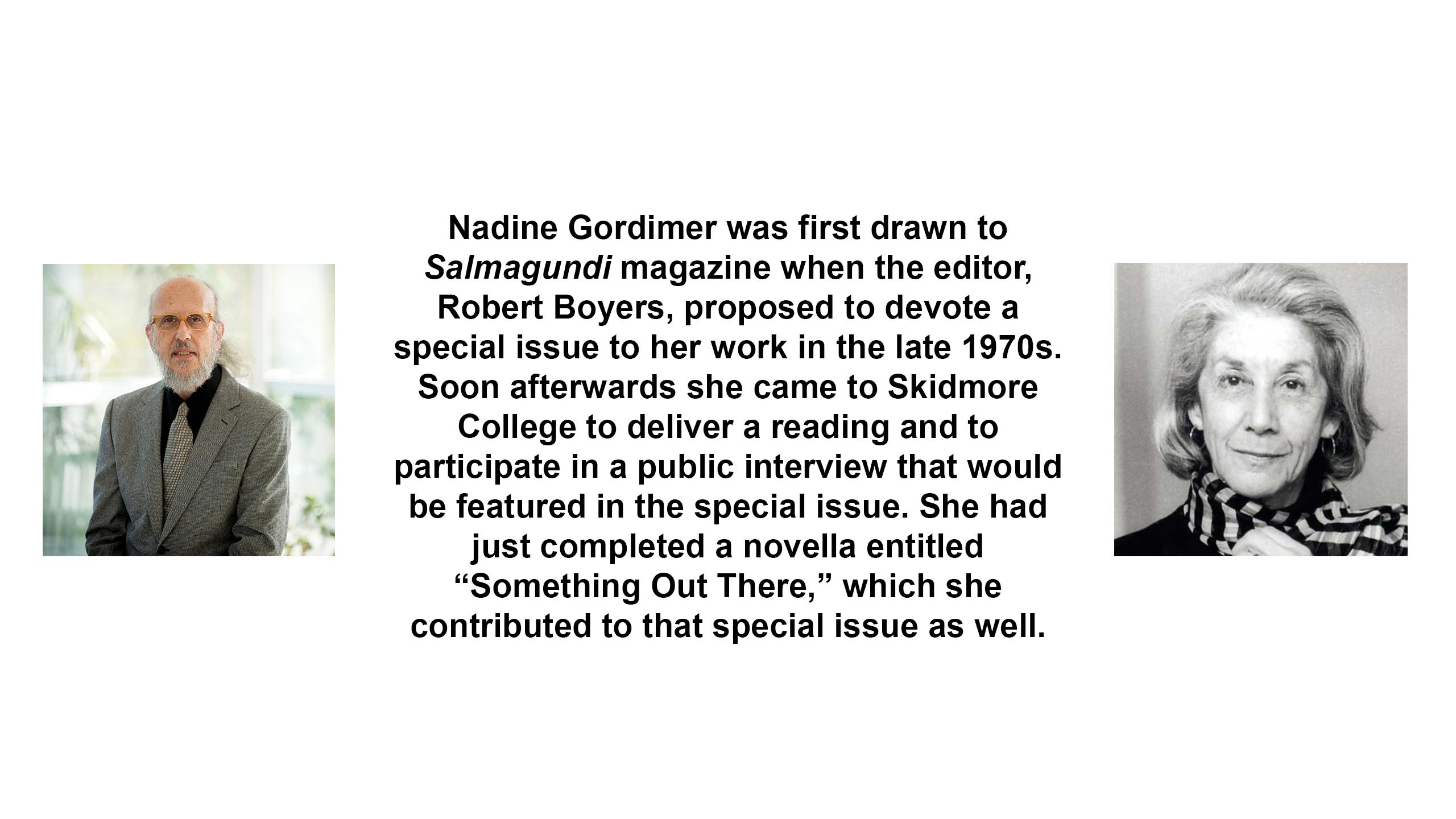

Robert Boyers
Robert Boyers
Nadine Gordimer was first drawn to Salmagundi magazine when the editor, Robert Boyers, proposed to devote a special issue to her work in the late 1970s. Soon afterwards she came to Skidmore College to deliver a reading and to participate in a public interview that would be featured in the special issue. She had just completed a novella entitled “Something Out There,” which she contributed to that special issue as well.
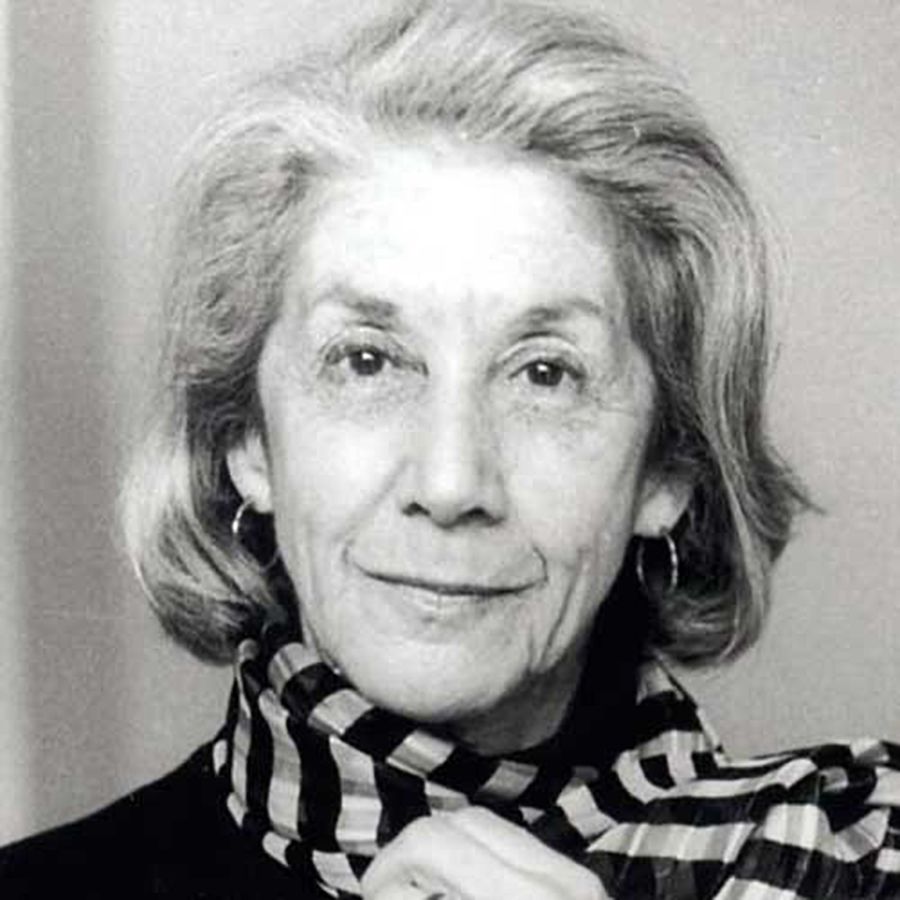
Nadine Gordimer
Nadine Gordimer
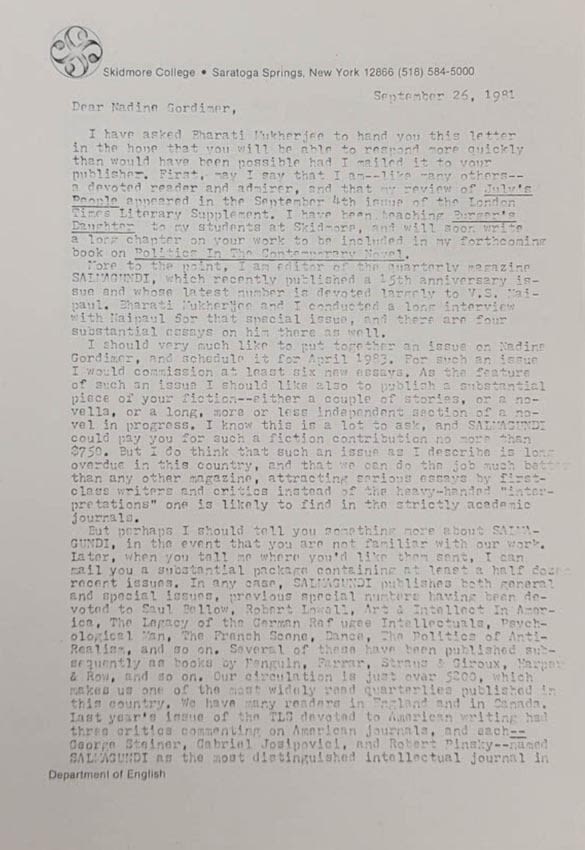
September 26, 1981. Letter from Robert Boyers to Nadine Gordimer. Courtesy of Salmagundi magazine, Skidmore College, Saratoga Springs, NY
September 26, 1981. Letter from Robert Boyers to Nadine Gordimer. Courtesy of Salmagundi magazine, Skidmore College, Saratoga Springs, NY
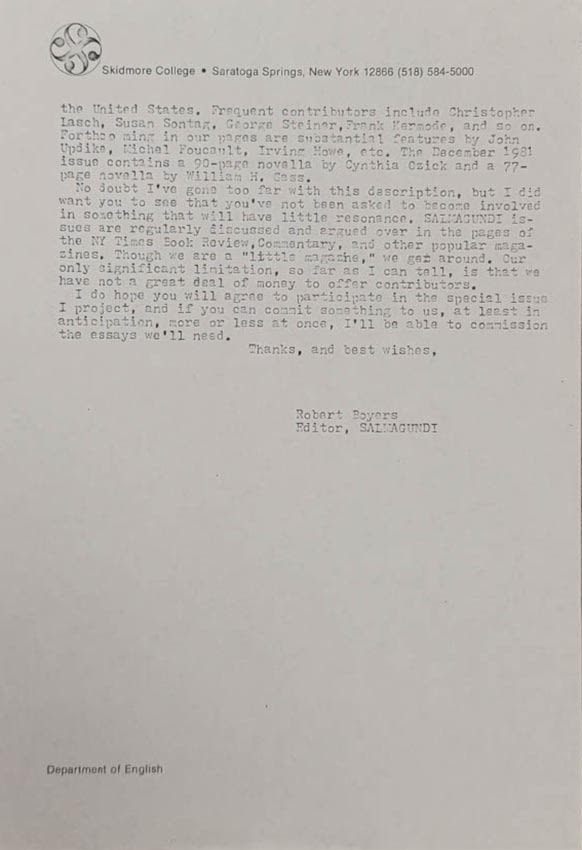
September 26, 1981. Letter from Robert Boyers to Nadine Gordimer. Courtesy of Salmagundi magazine, Skidmore College, Saratoga Springs, NY
September 26, 1981. Letter from Robert Boyers to Nadine Gordimer. Courtesy of Salmagundi magazine, Skidmore College, Saratoga Springs, NY
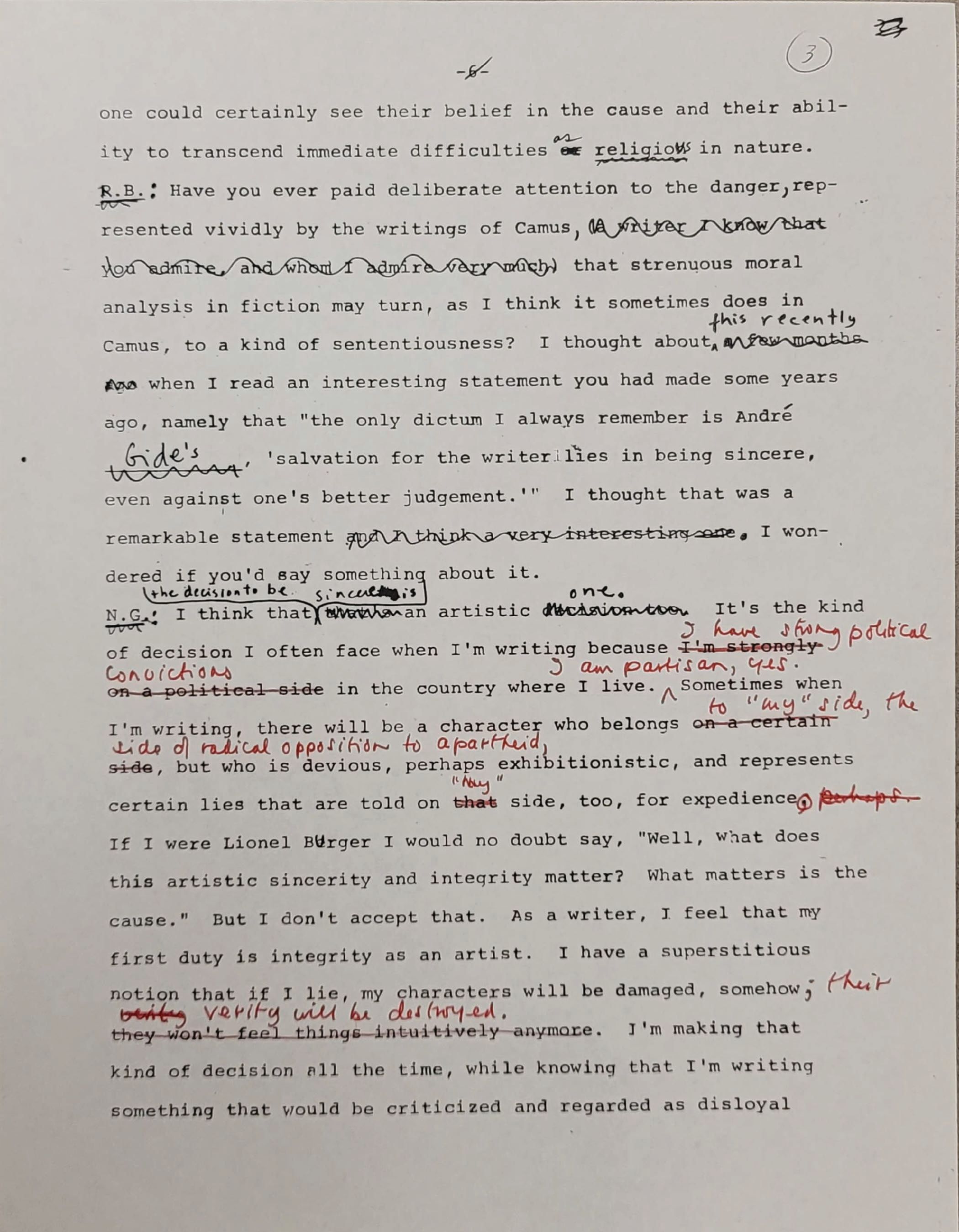
Two pages from transcript of October 1982 interview with Gordimer, with her edits in red. The interview would appear in the Winter 1984 issue dedicated to her. The complete interview follows. Courtesy of Salmagundi magazine, Skidmore College, Saratoga Springs, NY
Two pages from transcript of October 1982 interview with Gordimer, with her edits in red. The interview would appear in the Winter 1984 issue dedicated to her. The complete interview follows. Courtesy of Salmagundi magazine, Skidmore College, Saratoga Springs, NY
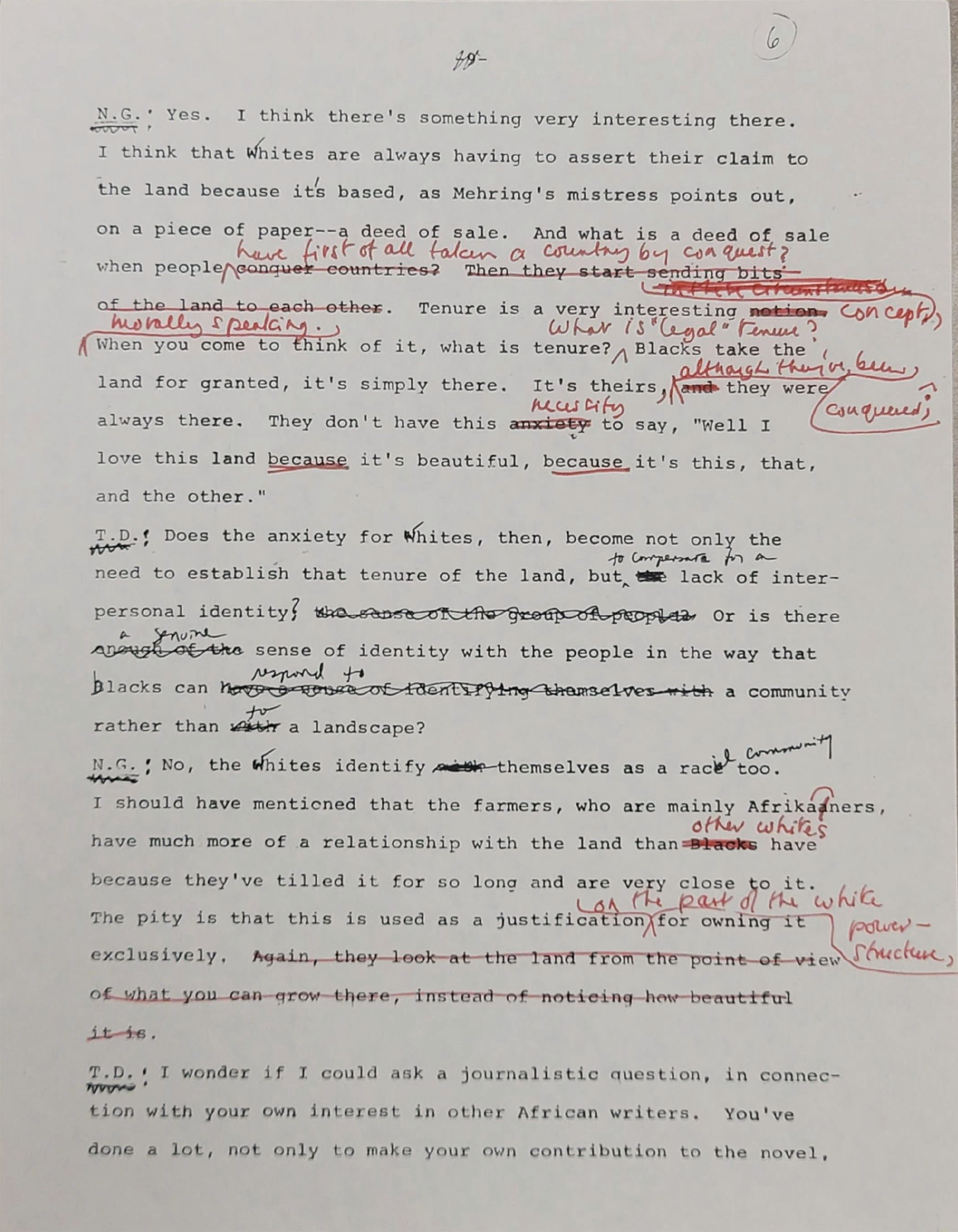
Two pages from transcript of October 1982 interview with Gordimer, with her edits in red. The interview would appear in the Winter 1984 issue dedicated to her. The complete interview follows. Courtesy of Salmagundi magazine, Skidmore College, Saratoga Springs, NY
Two pages from transcript of October 1982 interview with Gordimer, with her edits in red. The interview would appear in the Winter 1984 issue dedicated to her. The complete interview follows. Courtesy of Salmagundi magazine, Skidmore College, Saratoga Springs, NY
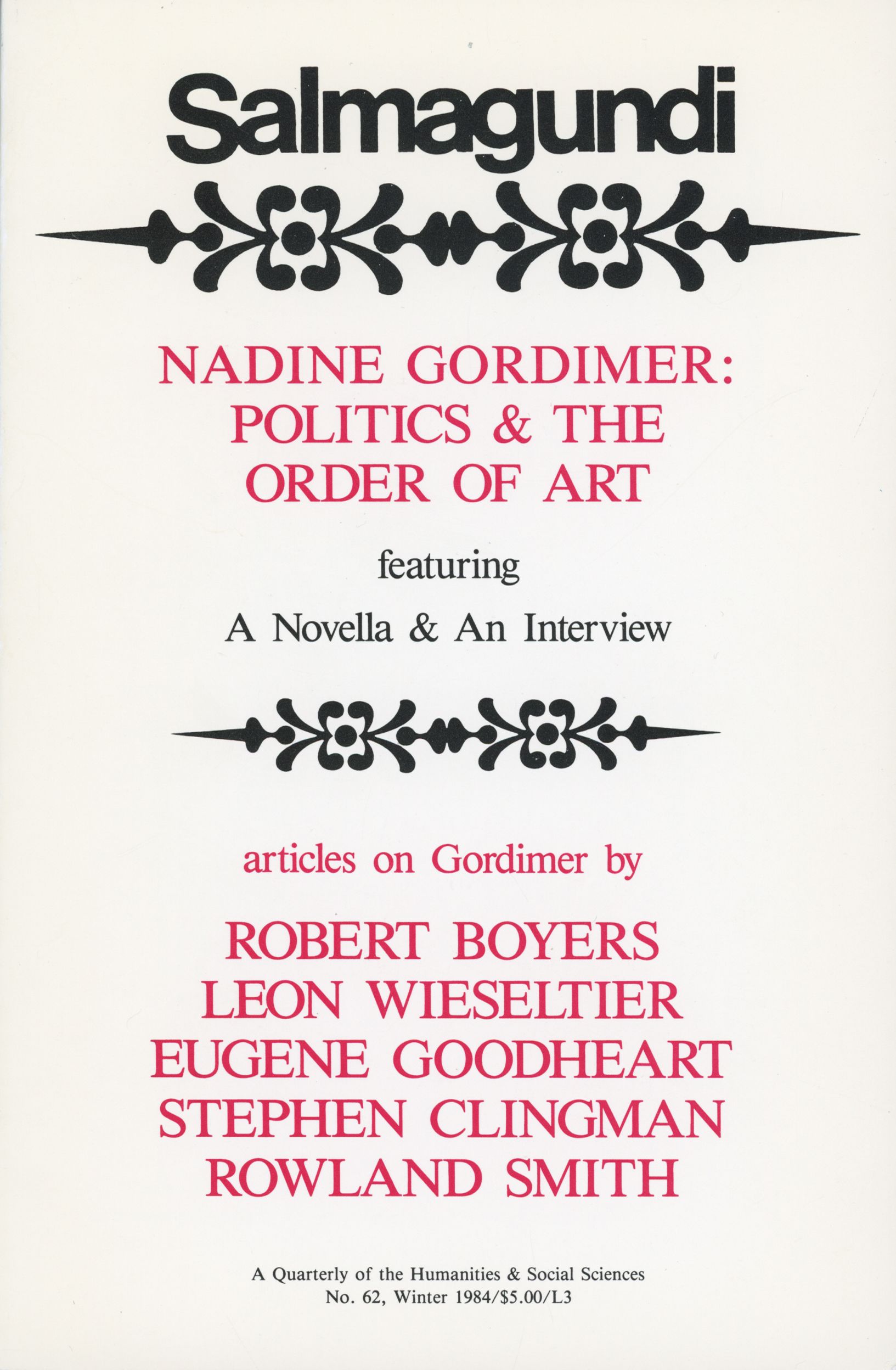
An Interview:
"A Conversation with Nadine Gordimer"
Click on the box in the bottom left corner to view in full screen.
January 23, 1983. Gordimer writes to Boyers with comments about his essay on her writing, “Public and Private: On Burger’s Daughter,” for the Winter 1984 special issue of Salmagundi.
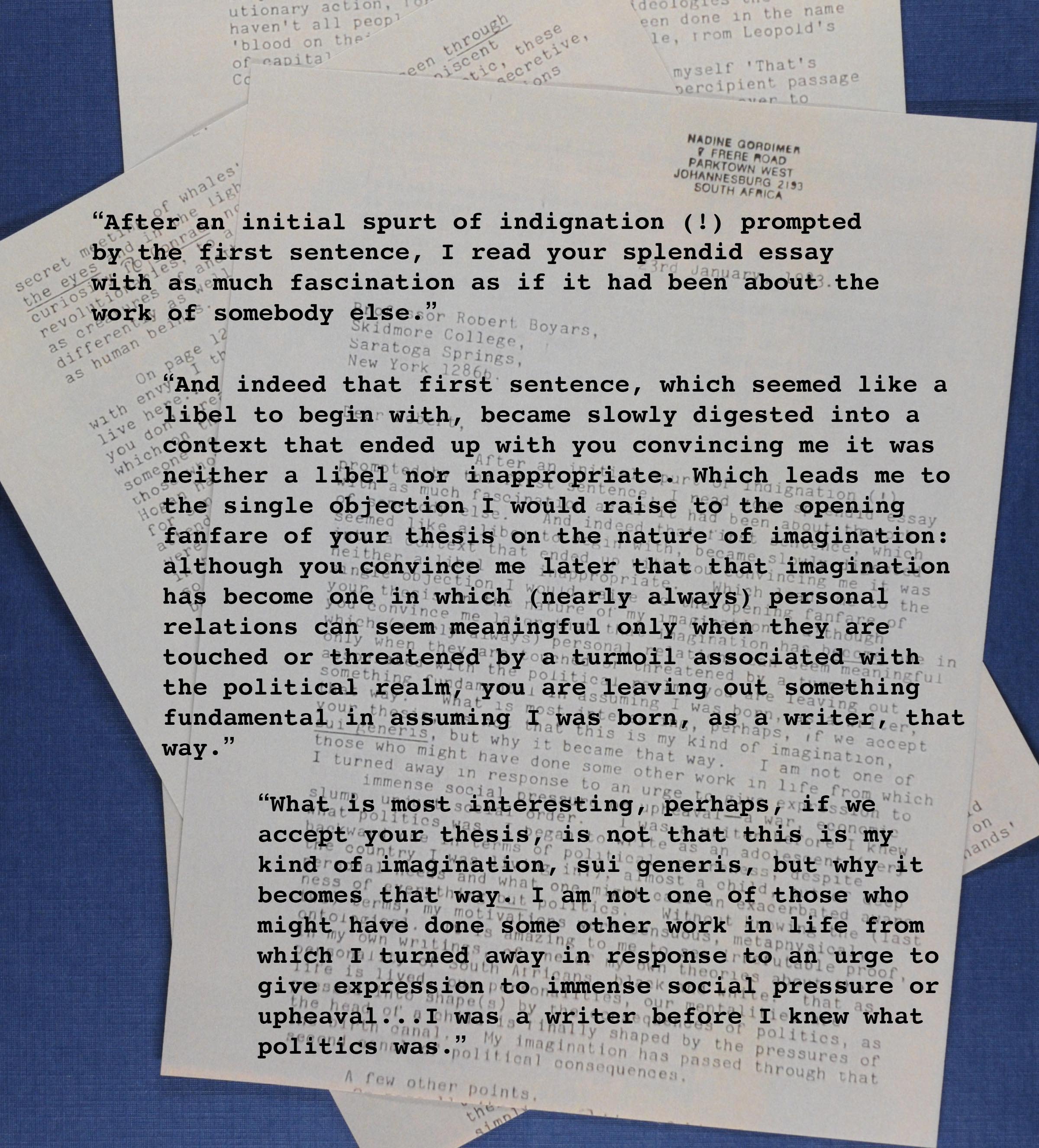
Courtesy of Salmagundi magazine, Skidmore College, Saratoga Springs, NY
Courtesy of Salmagundi magazine, Skidmore College, Saratoga Springs, NY
February 23, 1983. Boyers replies to Gordimer's letter, commenting that it "means more to me than any letter I've received in my now almost twenty-year long literary career."
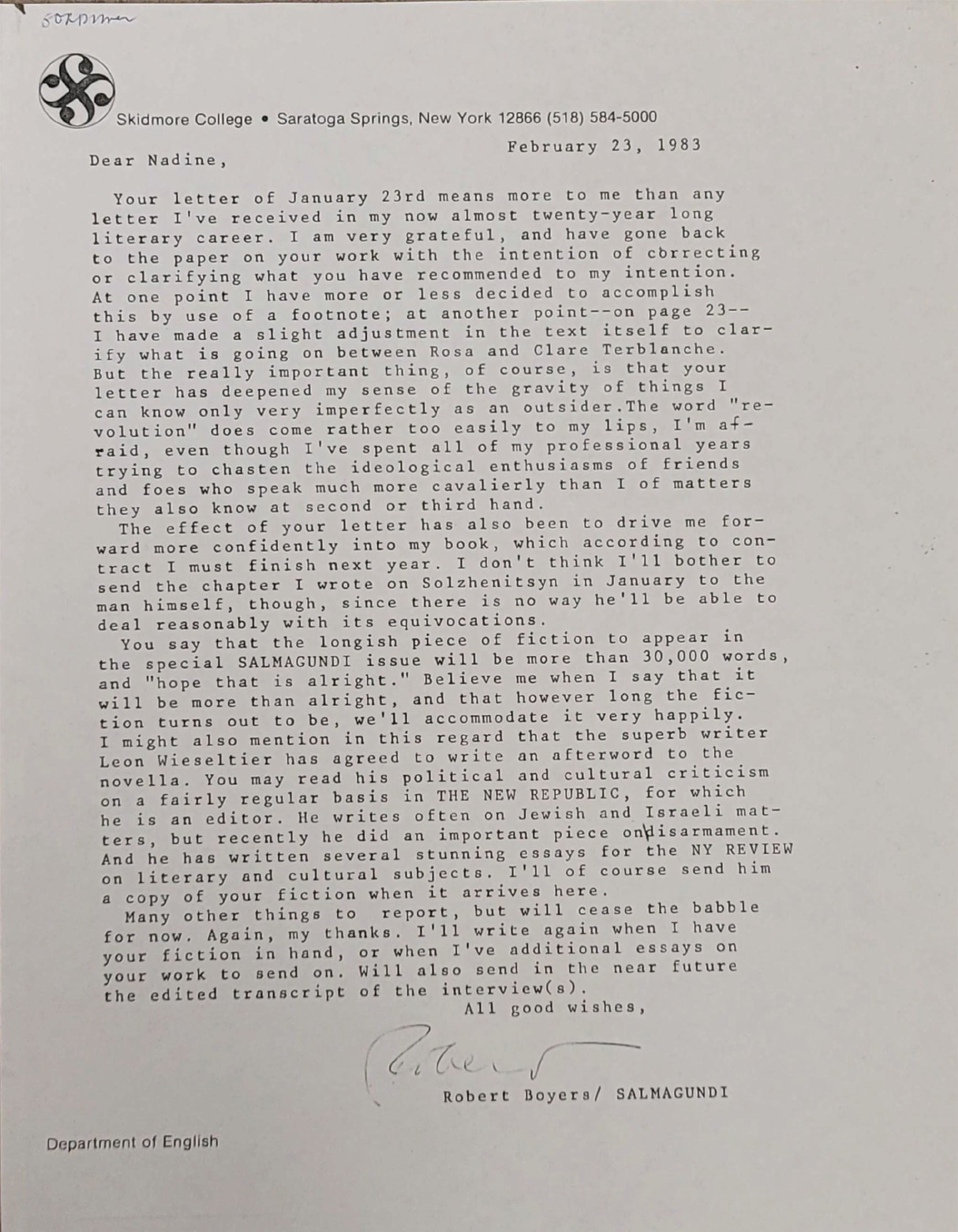
Courtesy of Salmagundi magazine, Skidmore College, Saratoga Springs, NY
Courtesy of Salmagundi magazine, Skidmore College, Saratoga Springs, NY
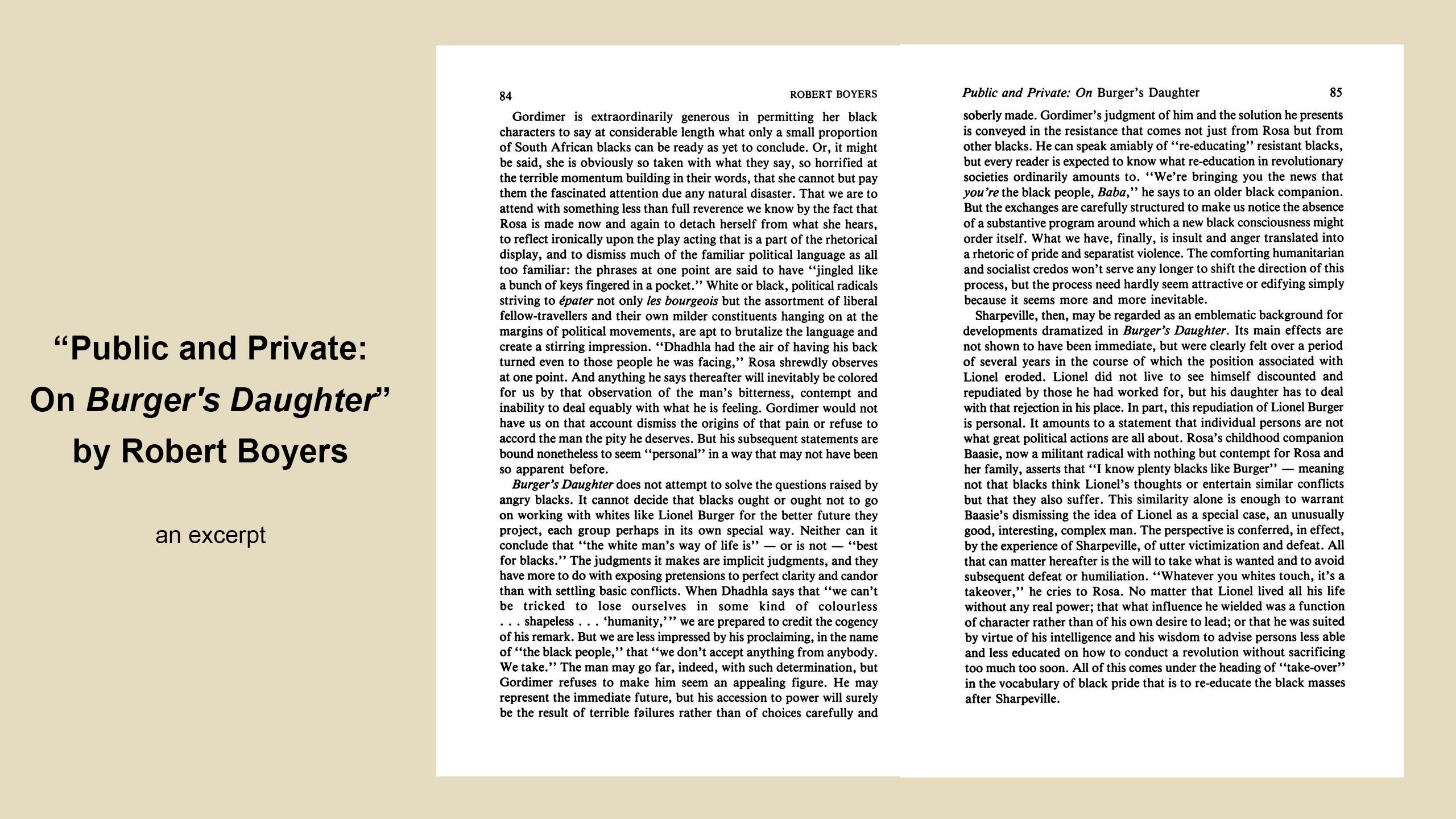
“Public and Private:
On Burger's Daughter”
by Robert Boyers
an excerpt
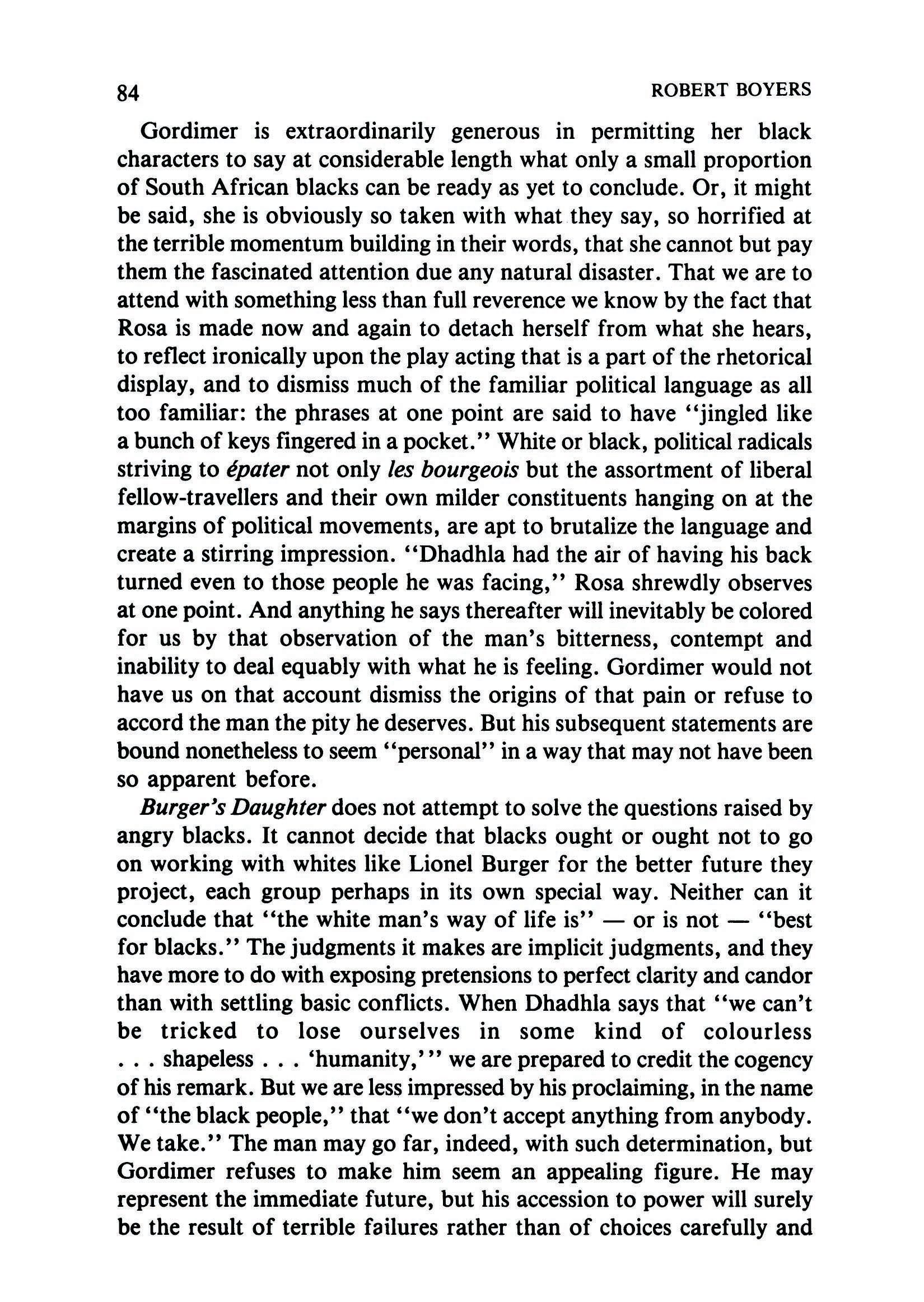
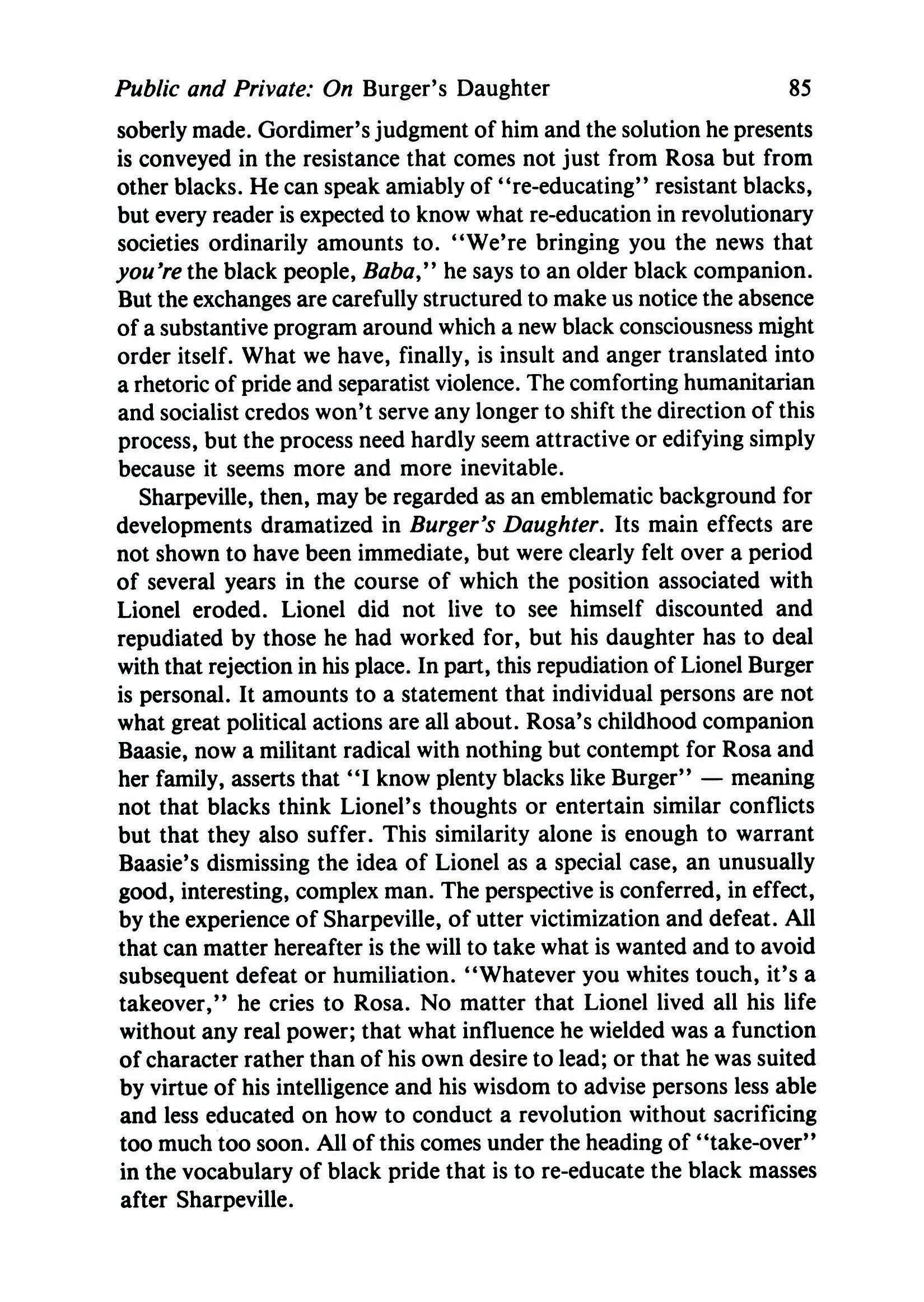
Courtesy of Salmagundi magazine, Skidmore College, Saratoga Springs, NY
Courtesy of Salmagundi magazine, Skidmore College, Saratoga Springs, NY
“As I have quickly come to expect from you, an extraordinary perception that enters neither horizontally (cutting through the text layer by layer, in the manner of ‘literary’ criticism) nor vertically (cutting down through social and psychological bases) but from some oblique angle that penetrates to the point of fusion these other methods inadvertently miss – and destroy.”
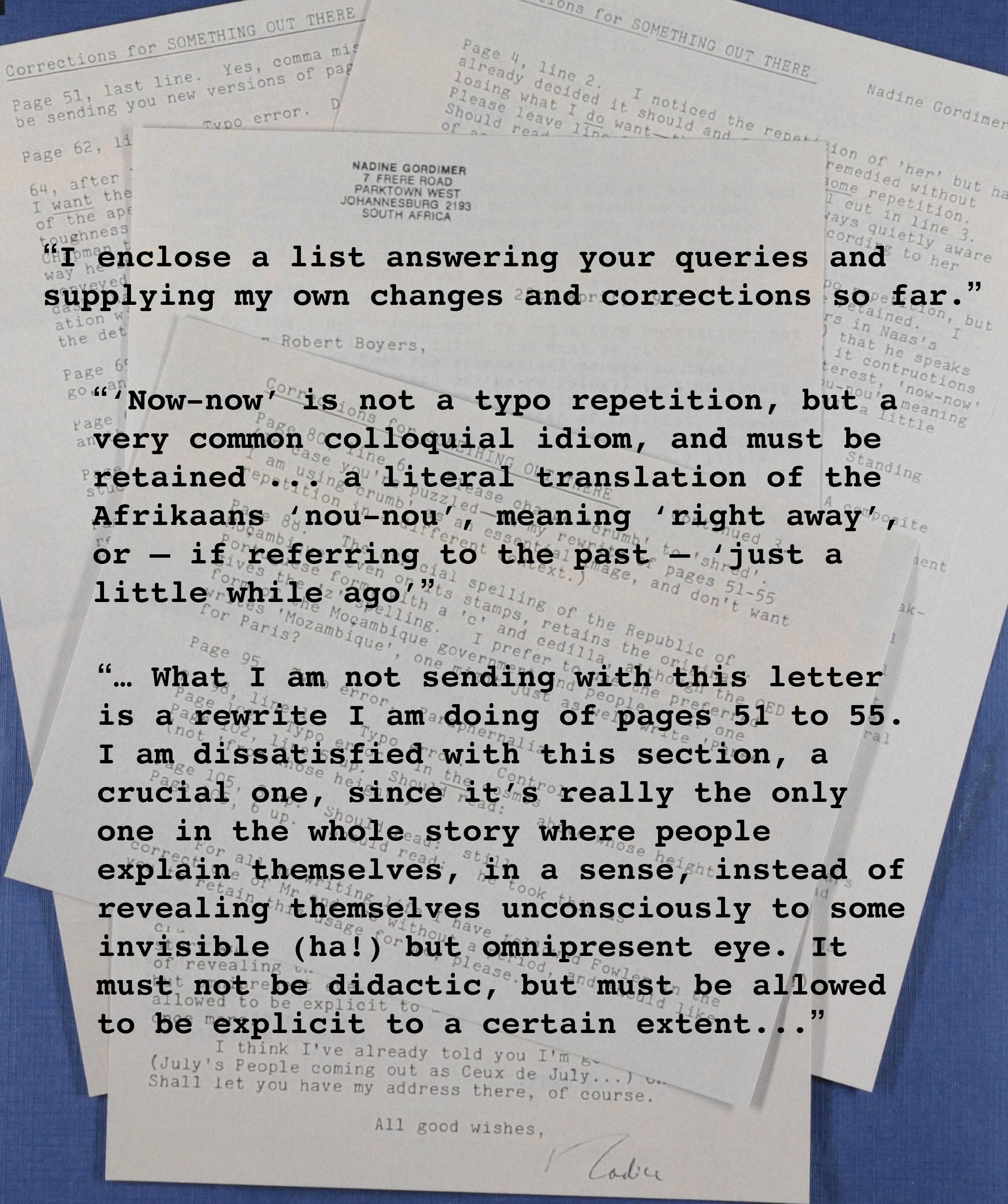
April 28, 1983. Letter from Nadine Gordimer to Robert Boyers regarding her novella "Something Out There" to be published in the 1984 special issue of Salmagundi. Courtesy of Salmagundi magazine, Skidmore College, Saratoga Springs, NY
April 28, 1983. Letter from Nadine Gordimer to Robert Boyers regarding her novella "Something Out There" to be published in the 1984 special issue of Salmagundi. Courtesy of Salmagundi magazine, Skidmore College, Saratoga Springs, NY
A Novella:
"Something Out There"
Click on the box in the bottom left corner to view in full screen.
Boyers and Gordimer soon became friends, exchanging dozens of letters and arranging to meet when they could. When she visited Skidmore College in 1990 he was able to confer upon her an Honorary Doctorate of Humane Letters, and in the course of the decades he wrote several essays and reviews about her work.


"The treat of a long letter from you, and this time with the enclosure of what is, so far, the only review of Gesture that understands...what I am about.. "
"You can imagine what a review like yours means to me, after all this. You understand what tears me apart and holds me together, somehow. If that sounds melodramatic, it happens to be the plain truth. Reviews have been better in England than in the U.S., but none has approached yours. I am immensely grateful that someone with your intellect (and the special intelligence of intellectual patience) has taken the trouble to see the writer and the human being as a whole..."
"I was very interested to hear of your diffidence about writing stories, and although our cases are different, because I'm no critic – I sweat over critical pieces as I never do over fiction – I understand perfectly your formulation of the problem: that the prose texture in the stories doesn’t belong there, but to the non-fiction. I myself cannot move between fiction and non-fiction without this brushing-off of the pollen from one mode to the other. If I've been writing a non-fiction piece, I have to clear my vocabulary and syntax etc. before I can go back to the modes of the imagination. I usually do this by reading – or rather re-reading – a particularly good imaginative work by somebody else. I think you will have to give up, for a while, critical writing altogether, in order to clean the surface of your stories. Difficult for one who teaches and edits a journal."
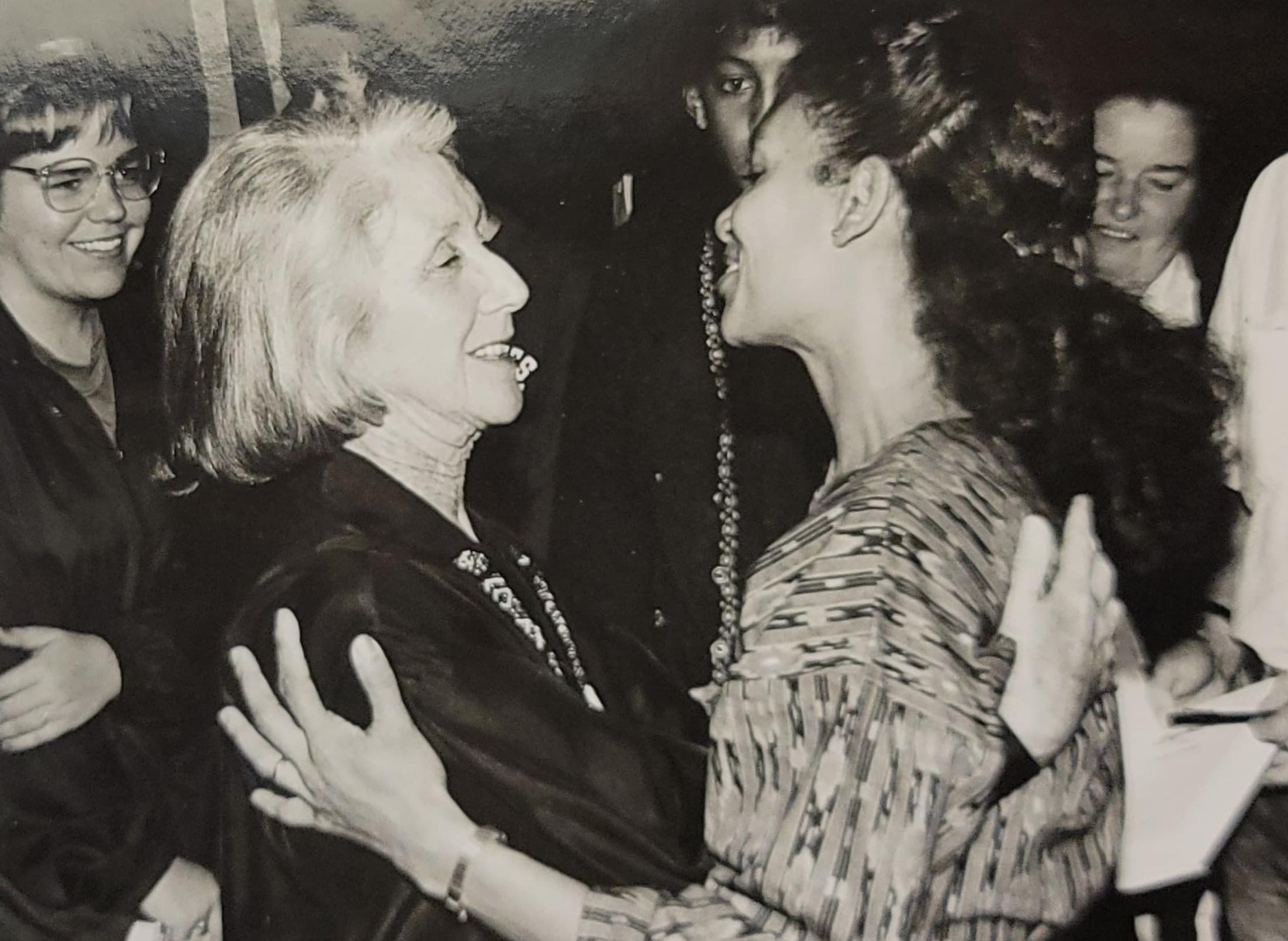
Gordimer at the reception following her lecture.
Gordimer at the reception following her lecture.
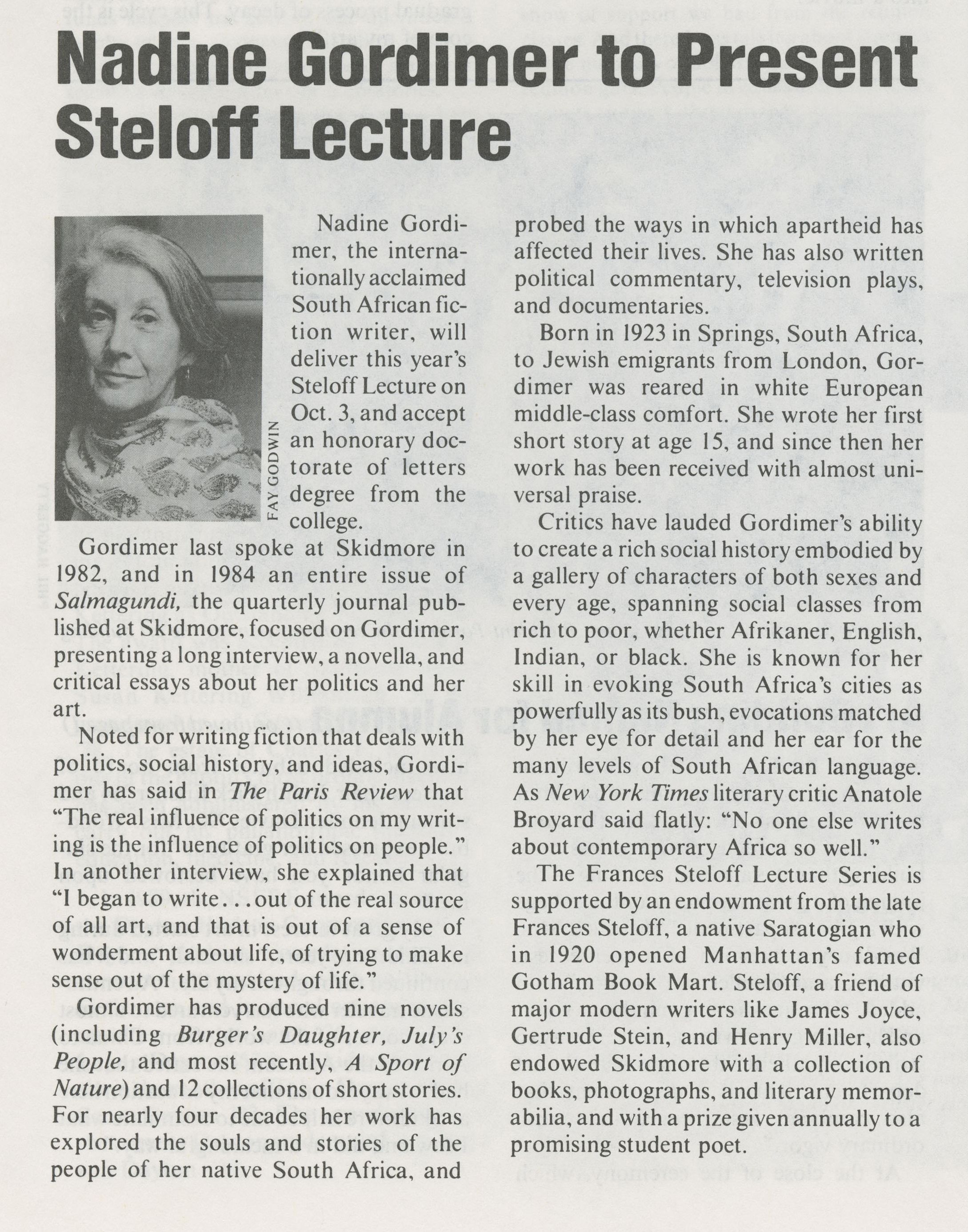
Article and photo courtesy of Salmagundi magazine, Skidmore College, Saratoga Springs, NY
Article and photo courtesy of Salmagundi magazine, Skidmore College, Saratoga Springs, NY
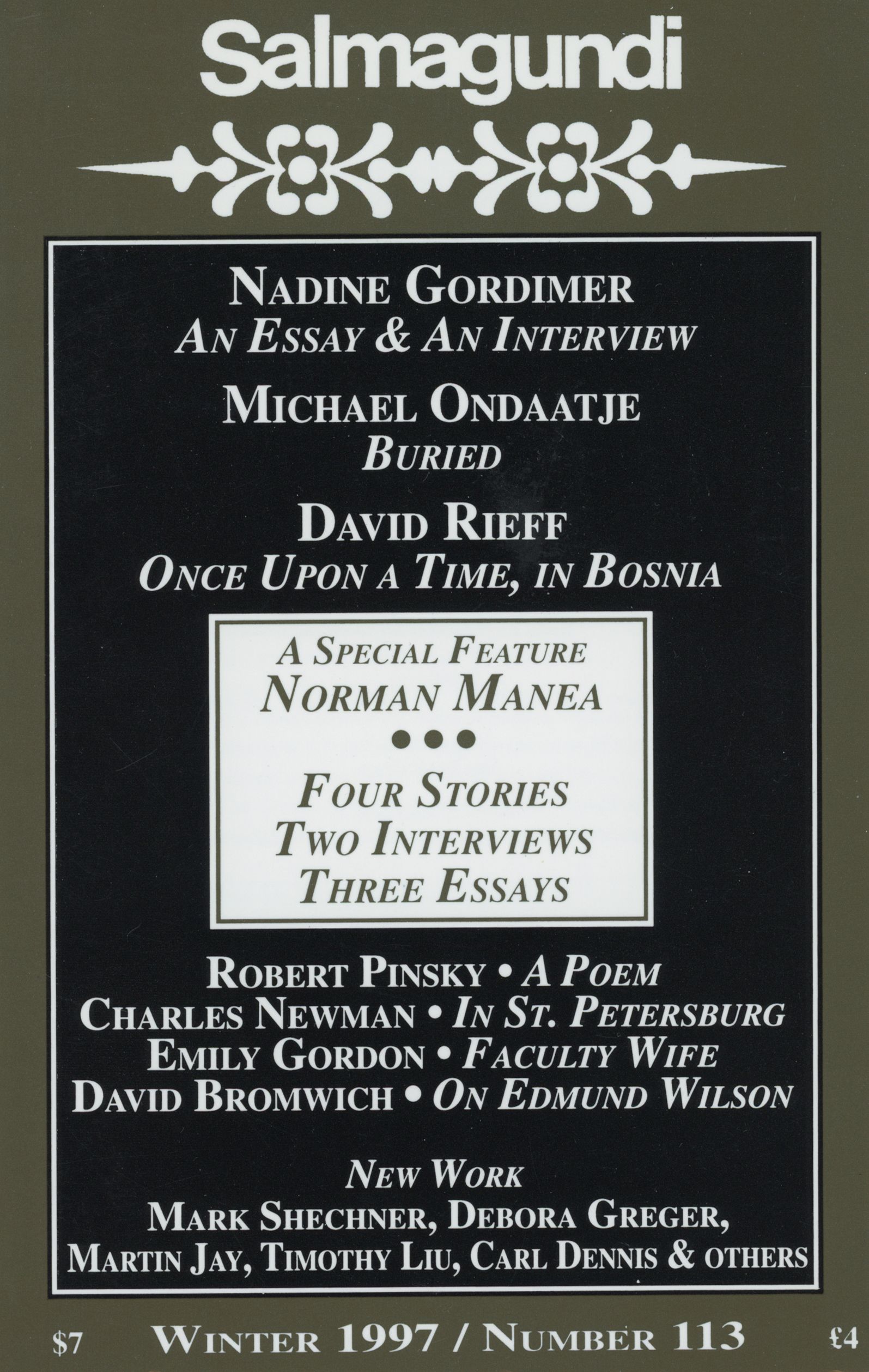
Click on the box in the bottom right corner to view in full screen.
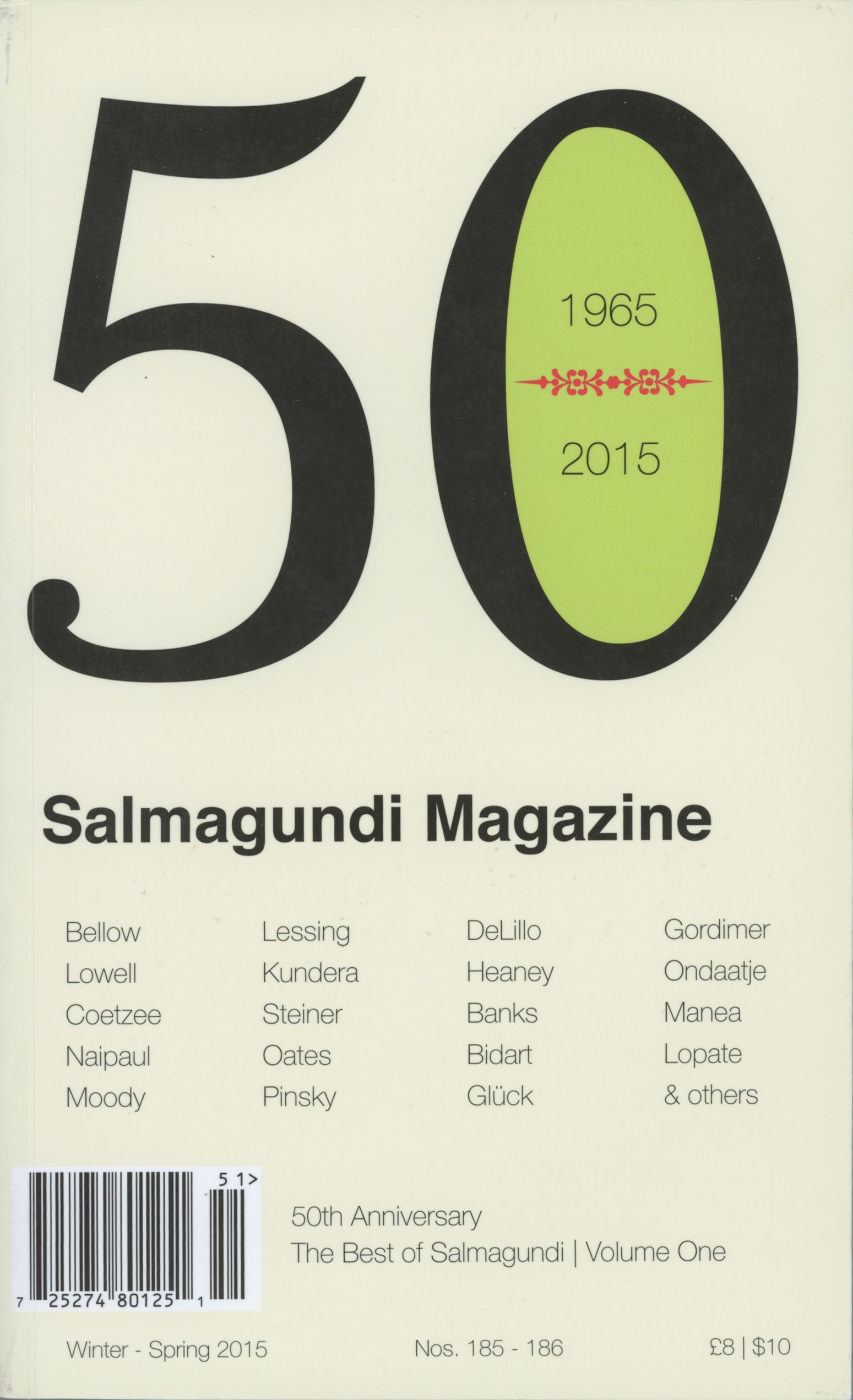
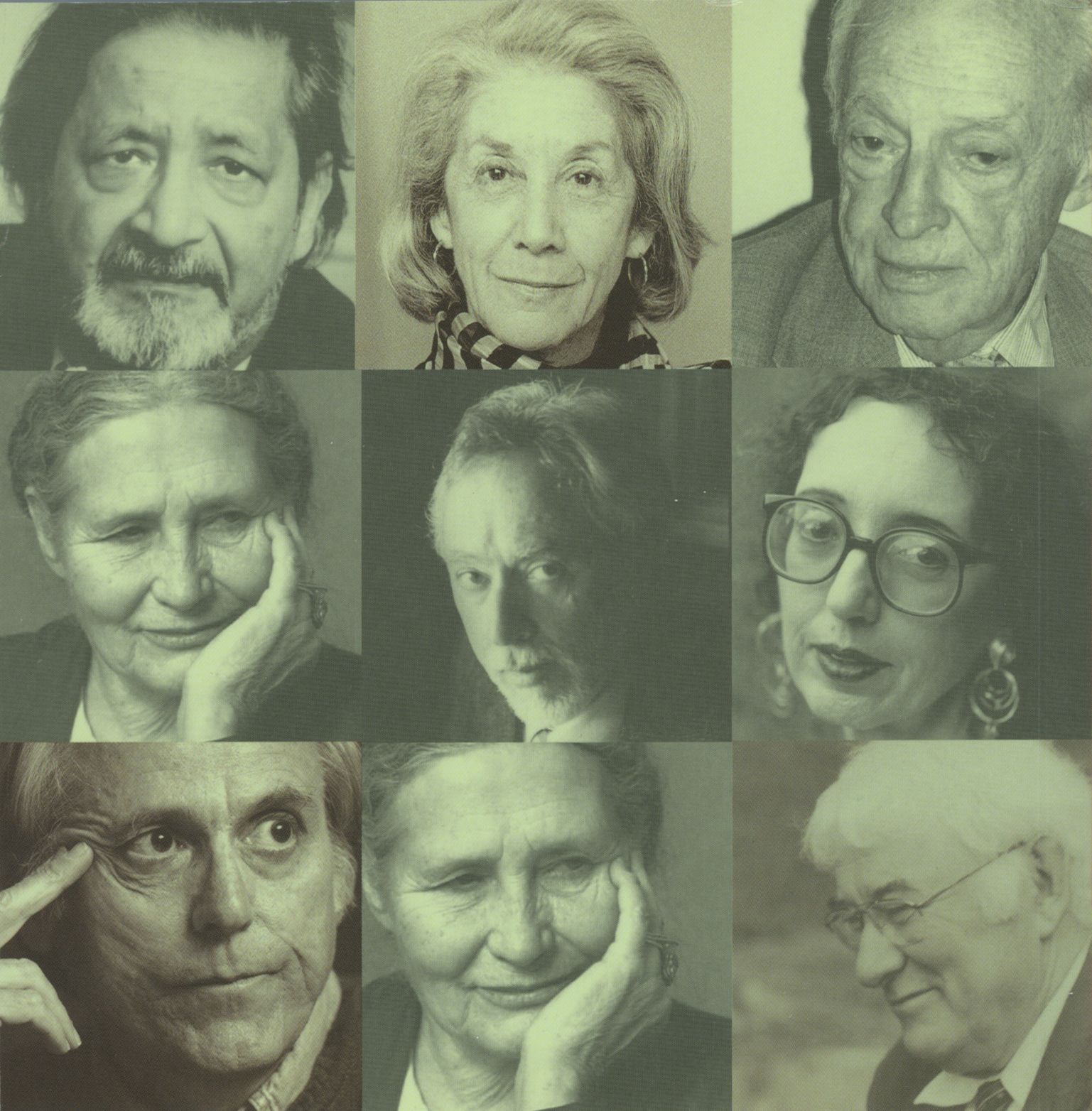
Click on the box in the bottom right corner to view in full screen.
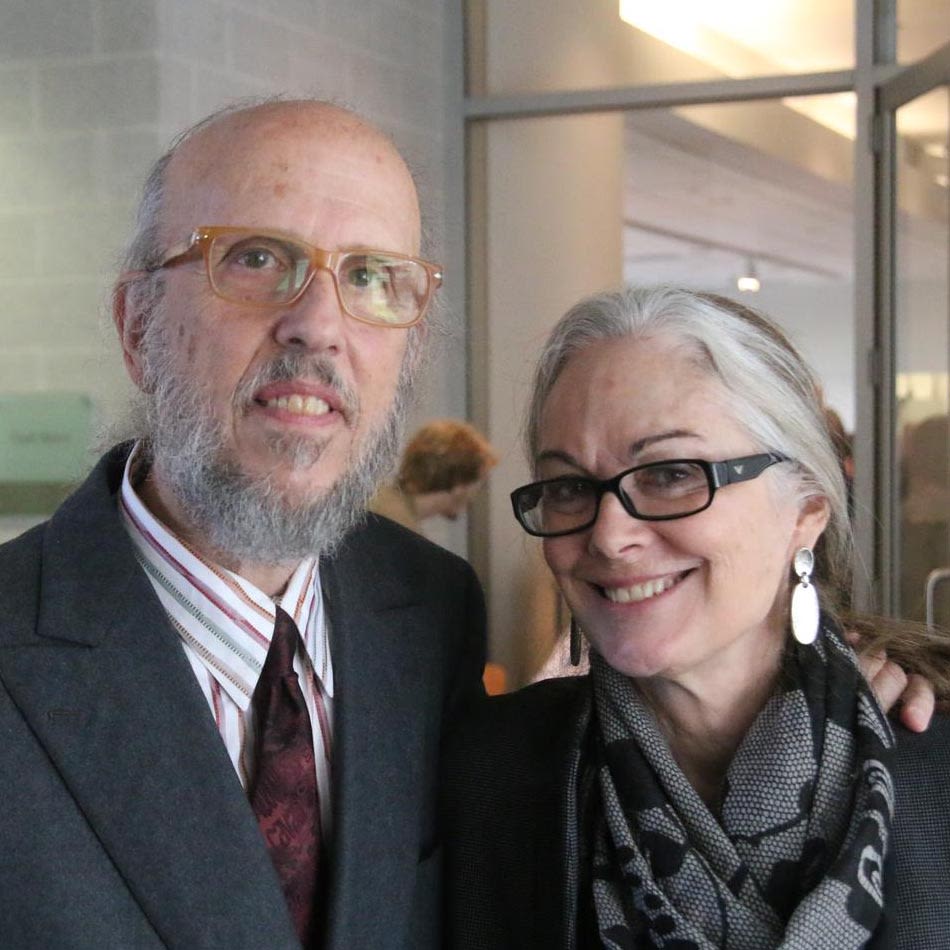
Robert and Peg Boyers at Salmagundi magazine's 50th anniversary celebration
Robert and Peg Boyers at Salmagundi magazine's 50th anniversary celebration
Over the years Gordimer contributed more than a dozen stories, the one novella, two essays and two additional interviews to the pages of Salmagundi. On her visits to New York City Boyers and his wife Peg often met with Gordimer, and at her reading at the 92nd Street Y in 1998 he was asked to introduce her.

Robert and Peg Boyers at Salmagundi magazine's 50th anniversary celebration
Robert and Peg Boyers at Salmagundi magazine's 50th anniversary celebration
Over the years Gordimer contributed more than a dozen stories, the one novella, two essays and two additional interviews to the pages of Salmagundi. On her visits to New York City Boyers and his wife Peg often met with Gordimer, and at her reading at the 92nd Street Y in 1998 he was asked to introduce her.
Gordimer's other stories in Salmagundi
“Once Upon a Time.” Salmagundi, no. 81, 1989, pp. 67–73
“A Find.” Salmagundi, no. 88/89, 1990, pp. 72–77.
“New Faces in Town.” Salmagundi, no. 100, 1993, pp. 51–65.
“Gemini.” Salmagundi, no. 128/129, 2000, pp. 124–31.
“Allesverloren.” Salmagundi, no. 144/145, 2004, pp. 21–31.
“Afterlife.” Salmagundi, no. 160/161, 2008, pp. 109–12.
“Parking Tax.” Salmagundi, no. 164/165, 2009, pp. 64–71.

Clearly Gordimer had an unusual fondness for little magazines, as evidenced by the work she did to promote fledgling South African periodicals. On a number of occasions, when she’d written three or four new stories, she asked her agent to send them all to Salmagundi so that “the Boyers can make their selection” before the others went off to the big national magazines like The New Yorker.
Excerpts from "In Memoriam: Nadine Gordimer"
JULY 15, 2014
South African writer Nadine Gordimer, a generous friend to Skidmore’s Salmagundi magazine, died July 14, 2014. "Her work helped break the silence about the struggles and tragedies of South Africa under apartheid,” noted The New York Times.
Gordimer’s work explored the souls and stories of the people of her native South Africa, probing the ways in which its apartheid political system affected their lives. Skidmore Professor of English Robert Boyers provided this remembrance of the celebrated author:
"Nadine Gordimer, one of the great writers of the twentieth century, died on July 14 at the age of 90. The obituaries will indicate that she lived a full and rewarding life. As the winner of the 1991 Nobel Prize for Literature she had a very large international readership which went far beyond her native South Africa, where her books were sometimes banned and where she was widely known as an effective and committed opponent of the apartheid regime which finally collapsed in 1994.
"Gordimer's greatest work was the novel Burger's Daughter, though others—including July's People—were taught in high schools and colleges and brought attention to the evils of apartheid at a time when newspapers around the world were alert to the system but few writers of consequence devoted sustained literary attention to the subject. Gordimer often noted that she was not by instinct a political writer, but that she found it impossible to live under apartheid without addressing it in her work. Had she been born in a different sort of country, she said, she would probably not have written about politics at all. Though she refused to regard her work as "political fiction," she had to admit that her narratives were deeply immersed in politics. Other important novels by Gordimer include The Conservationist, A Sport of Nature and The Pickup. Her short stories are included in virtually every anthology of twentieth century world fiction, her most famous story was 'A Soldier's Embrace.'
Courtesy of Salmagundi magazine, Skidmore College, Saratoga Springs, NY

Virtual Keynote with
Claire Messud, Robert Boyers, & James Wood
“Writing & Political Activism:
The Work of South African Writer
Nadine Gordimer”

We'd like to thank our project partners:
The Honors Program at Roger Williams University
The Lilly Library at Indiana University, Bloomington
Salmagundi magazine at Skidmore College

